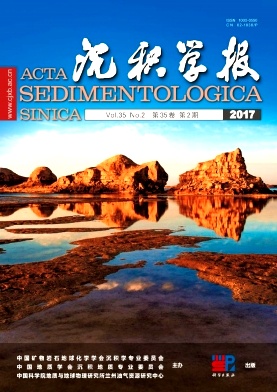Controlling Factors of Secondary Pore Development and Petroleum Exploration Significance of Permian Clastic Rocks in Northwest Margin of Junggar Basin
doi: 10.14027/j.cnki.cjxb.2017.02.011
- Received Date: 2016-03-08
- Rev Recd Date: 2016-05-04
- Publish Date: 2017-04-10
-
Key words:
- secondary pores /
- controlling factors /
- clastic rock /
- Permian /
- Junggar Basin
Abstract: Permian clastic reservoir is an important exploration horizon in the northwest margin of Junggar Basin, with the burial depth more than 3 600 meters. And it is very important to study Permian clastic reservoir secondary pore developement and its controlling factors. Based on the thin section analysis of 1 400 pieces in more than 120 wells, core observation, fluorescent thin-section, scanning electron microscopy, clay mineral, and in combination with sedimentary facies, tectonic evolution and organic evolution characteristics, Permian clastic reservoir secondary porosity developed law and controlling factors are studied. Casting thin section show that Permian clastic reservoir has development not only primary intergranular pore, but also grain dissolved pore, cement dissolution pore and fracture of secondary porosity. It is concluded that primary intergranular pore is mainly controlled by sedimentary facies belt, compaction and cementation. The primary intergranular pore developed in coarse, well-sorted, high maturity of structure and composition. The corresponding microfacies are braided channel of fan delta plain and underwater channel of fan delta front. The primary intergranular pore are developed in basin edge, and decreased to basin center. The dissolved pore of grains, carbonate cements and zeolite cements are controlled by the scale and scope of inorganic acid and organic acids. The inorganic acid dissolution pore is developed regionally in basin edge where the unconformity surface and faults are developed. The organic acid dissolution pore is developed in near hydrocarbon of source rock, mainly distributed in basin center. Fractures are generated under the action of tectonic compression, and it is controlled by tectonic stress strength, grade size and matrix content. Fractures are mainly distributed in low matrix content sandy conglomerate in fault zone of northwest margin. Horizontally in the basin edge, the mainly Permian reservoir pore type is primary intergranular pore, followed by the inorganic acid dissolution pore and fracture. In basin center, the major pore type is organic acid dissolution pore, secondly is primary intergranular pore. Integrating with distribution characteristics of sedimentary facies and zeolite cements, structural feature and the evolution history of organic matter, it is considered that middle-belt of basin is the favorable zone to form lawnontite dissolution pore because it is the fan delta front sub-facies and laumontite cement development area, meanwhile it is near hydrocarbon source rocks and located in the updip direction of three periods organic acid migration. It points out that central basin is laumonite dissolution pore development area, and it's the favorable Permian clastic reservoir for Permian petroleum exploration.
| Citation: | GUO MoZhen, XU Yang, SHOU JianFeng, LIU ZhanGuo, HAN ShouHua. Controlling Factors of Secondary Pore Development and Petroleum Exploration Significance of Permian Clastic Rocks in Northwest Margin of Junggar Basin[J]. Acta Sedimentologica Sinica, 2017, 35(2): 330-342. doi: 10.14027/j.cnki.cjxb.2017.02.011 |






 DownLoad:
DownLoad: